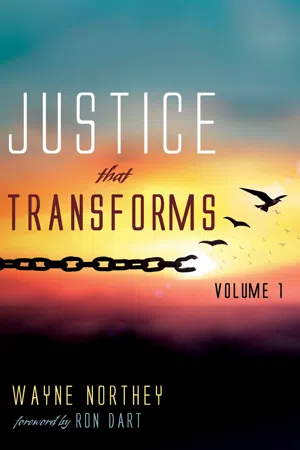![]()
A New Paradigm of Justice
Context:
From a Canadian vantage point, Dr. Herman Bianchi, a Dutch criminologist, is one of the three “grandfathers” (if one must use that term) chronologically of Restorative Justice, together with Mark Yantzi and Dave Worth, the first and longstanding Restorative Justice practitioners/theorists in Canada. Though the term predates all three, and other related practices were taking place in the United States and elsewhere. There are issues in any event about referring to “Restorative Justice” as though a unified “movement” with a single “grandfather” or “grandmother.”
Contemporary Western Restorative Justice theory and practice were not first developed by Americans, though they have greatly contributed to its worldwide expansion. In particular Howard Zehr’s name stands out in the earlier and subsequent years; but not as theory originator, or first practitioner. A hagiographic myth assigns the term “grandfather” to one person, when there is in fact no such.
There had been numerous previous publications in Dutch by Dr. Bianchi. One such was the Restorative Justice classic, Justice As Sanctuary, which had been published in Dutch (Gerechtigheid als Vrijplaats) in 1985, and was eventually translated into English in 1994 through American criminologist Harold Pepinsky. A year later Dr. Bianchi co-edited Abolitionism: Towards a Non-Repressive Approach Towards Crime. My contribution was the final chapter seen here. The idea of “paradigm shift” is borrowed from Howard Zehr, in turn from Thomas Kuhn. Bianchi’s writings have seldom received their rightful due in relation to Restorative Justice theory. He lent his scholarly weight as well all through the early years of Restorative Justice to “The International Conference on Penal Abolition (ICOPA)”—see more below.
Dan Van Ness’ and Karen Heetderks Strong’s 1998 seminal Restoring Justice was comprehensive in its historically contextualizing Restorative Justice, and more encompassing than Zehr’s 1990 Changing Lenses. Dan’s impact on the early years of development was huge. His was also the first major website (under Justice Fellowship, an arm of Prison Fellowship), and it posted synopses of eventually thousands of resources.
Years ago I read about two persons on a crowded subway train in New York, where one happened to overhear the other say “Frodo” in conversation with someone else. The story goes that he literally dove across the sea of people, exclaiming, “You’re reading Tolkien too?!” In the early years of Restorative Justice, to hear someone in the criminal justice system use that term became a kind of instant bonding. Then the term began to appear in programs of criminal justice gatherings. And finally, emblazoned boldly on their sides were government-funded Restorative Justice “ocean liners” programs, when until then we few had to be content with small speedboats to spread the news—often enough early on running out of gas, then eventually at times initially swamped by the new ocean-going vessels . . .
And though there are other claimants, Mark Yantzi’s and David Worth’s “Kitchener Experiment/The Elmira Case” in Kitchener, Ontario, Canada became the most replicated program model, arguably the first.
There were also significant theoretical contributions and practices from Canadian aboriginal communities that take Restorative Justice back millennia—likewise in indigenous cultures worldwide—though again Dr. Richards negates ahistorical romanticizing about the claimed complete absence of retributive justice elements in those ancient-to-modern cultures. Canadians Crown Attorney Rupert Ross and Judge Barry Stuart are key early theorists and practitioners in this area.
A year after Zehr’s book appeared, Harold Pepinsky and Richard Quinney edited and published Criminology As Peacemaking, directly challenging the entire warmaking terminology and practice in criminal justice, calling alternatively for commitment to “make peace with crime and criminals [which absence] is reflected in the paucity of our daily personal relations, where we live by domination and discipline, where forgiveness and mercy are seen as naïve surrender to victimization. The essays in this volume propose peacemaking as an effective alternative to the ‘war’ on crime. They range from studies of the intellectual roots of the peacemaking tradition to concrete examples of peacemaking in the community, with special attention to feminist peacemmaking traditions and women’s experience.”
It was from that amazing book that I learned ever after to describe Restorative Justice at its simplest to be a peacemaking, not a warmaking response to crime—one quite expandable to all brokenness in human and international relationships. Pepinsky and Quinney belong to the panoply of early Restorative Justice “grandfathers.” They also connected this strand to the wider peace movements historically and around the world.
One chapter below, “Is There a Place for Dreaming?,” picks up on the i...
